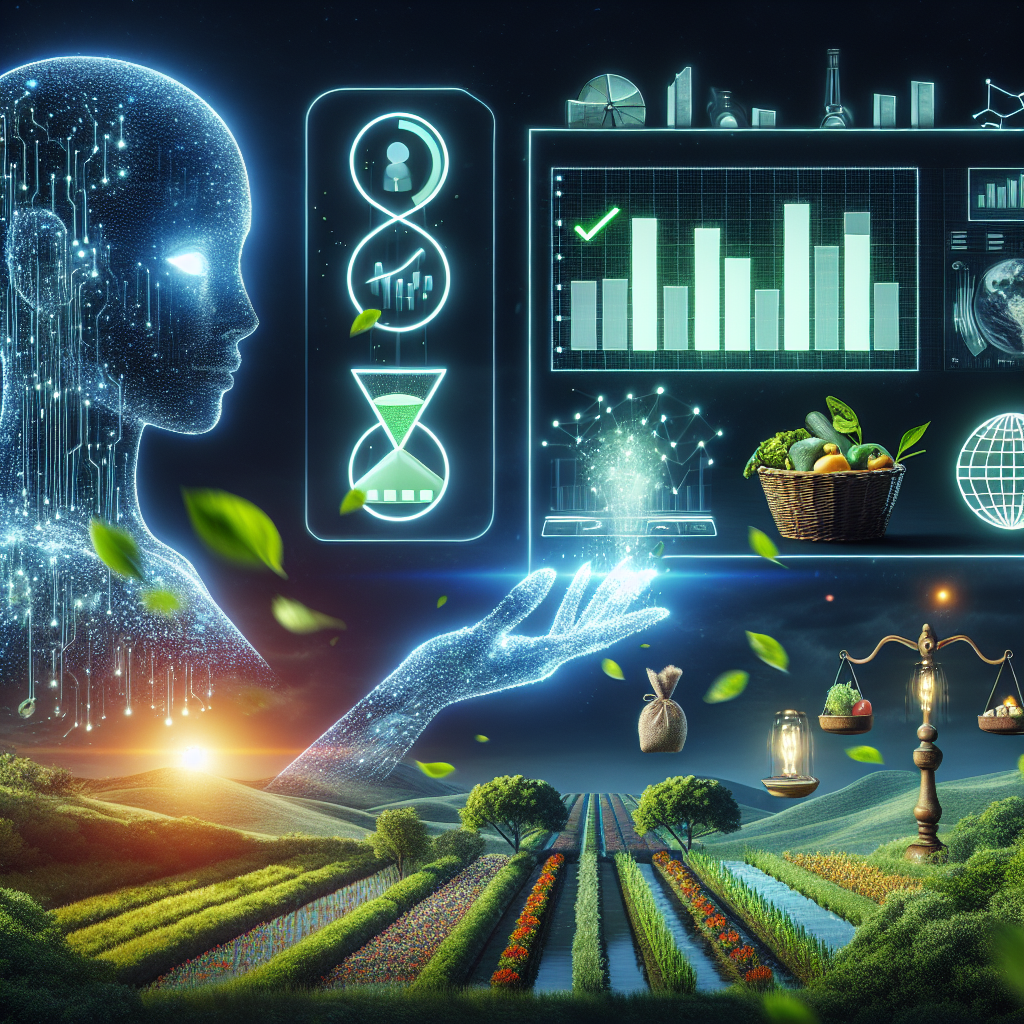Food waste is a significant global issue that not only impacts the environment but also contributes to food insecurity in many communities. According to the Food and Agriculture Organization of the United Nations, approximately one-third of all food produced for human consumption is wasted every year, amounting to about 1.3 billion tons of food. This wastage has a significant impact on the environment, as it contributes to greenhouse gas emissions, water waste, and deforestation.
Fortunately, advancements in artificial intelligence (AI) are offering new solutions to address food waste and promote sustainability. Through the use of AI technologies, organizations and individuals can better track, manage, and distribute food resources, ultimately reducing waste and ensuring that more people have access to nutritious food.
Philanthropic efforts are also playing a crucial role in leveraging AI to address food waste and sustainability. Foundations, non-profit organizations, and individual donors are investing in AI technologies and initiatives that aim to improve food distribution, reduce waste, and promote sustainable practices in the food industry.
One of the key ways in which AI is being used to address food waste is through the development of predictive analytics tools. These tools use AI algorithms to analyze data on food production, consumption, and waste, allowing organizations to better predict when and where food waste is likely to occur. By identifying potential waste hotspots, organizations can take proactive measures to prevent waste from happening in the first place.
For example, AI-powered inventory management systems can help food retailers and restaurants better track their inventory, reducing the likelihood of overstocking and spoilage. By accurately forecasting demand and adjusting their ordering processes accordingly, businesses can minimize food waste and improve their bottom line.
AI is also being used to optimize food distribution networks, ensuring that surplus food is redirected to those in need. For instance, AI algorithms can match food donations with local food banks, shelters, and community organizations, helping to bridge the gap between surplus food and food-insecure individuals. By streamlining the donation process and reducing logistical barriers, AI technologies make it easier for organizations to donate excess food and reduce waste.
Furthermore, AI-powered food waste tracking systems are helping organizations monitor and analyze their waste streams, allowing them to identify areas for improvement and implement more sustainable practices. By providing real-time data on food waste generation, these systems enable organizations to make informed decisions about waste reduction strategies, such as composting, recycling, or donation.
In addition to addressing food waste, AI technologies are also being used to promote sustainable practices in food production and distribution. For example, AI-powered precision agriculture systems can help farmers optimize their crop yields, reduce water usage, and minimize the use of pesticides and fertilizers. By analyzing soil data, weather patterns, and crop health metrics, these systems provide farmers with valuable insights that enable them to make more informed decisions about their farming practices.
Overall, the potential of AI in addressing food waste and sustainability is vast. By leveraging AI technologies, organizations and individuals can take proactive steps to reduce waste, improve food distribution, and promote sustainable practices in the food industry. With the support of philanthropic efforts, AI initiatives focused on food waste and sustainability have the potential to make a significant impact on global food systems, ultimately leading to a more sustainable and equitable future for all.
FAQs:
1. How can AI help reduce food waste in the food industry?
AI can help reduce food waste in the food industry by providing predictive analytics tools to better track and manage inventory, optimize distribution networks, and monitor waste streams. By leveraging AI technologies, organizations can identify areas for improvement and implement more sustainable practices to reduce waste.
2. What role do philanthropic efforts play in addressing food waste through AI?
Philanthropic efforts play a crucial role in leveraging AI to address food waste by investing in AI technologies and initiatives that aim to improve food distribution, reduce waste, and promote sustainable practices in the food industry. Foundations, non-profit organizations, and individual donors are supporting AI initiatives that have the potential to make a significant impact on global food systems.
3. How can AI promote sustainability in food production and distribution?
AI can promote sustainability in food production and distribution by providing farmers with precision agriculture systems that optimize crop yields, reduce water usage, and minimize the use of pesticides and fertilizers. By analyzing data on soil health, weather patterns, and crop health metrics, AI technologies enable farmers to make more informed decisions about their farming practices, leading to more sustainable food production.
4. What are some examples of AI technologies being used to address food waste?
Some examples of AI technologies being used to address food waste include predictive analytics tools for inventory management, optimization of food distribution networks, and tracking systems for monitoring waste streams. By leveraging AI, organizations can take proactive steps to reduce waste, improve food distribution, and promote sustainable practices in the food industry.

